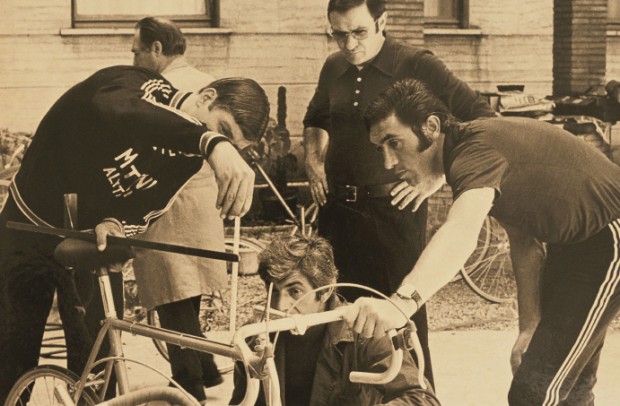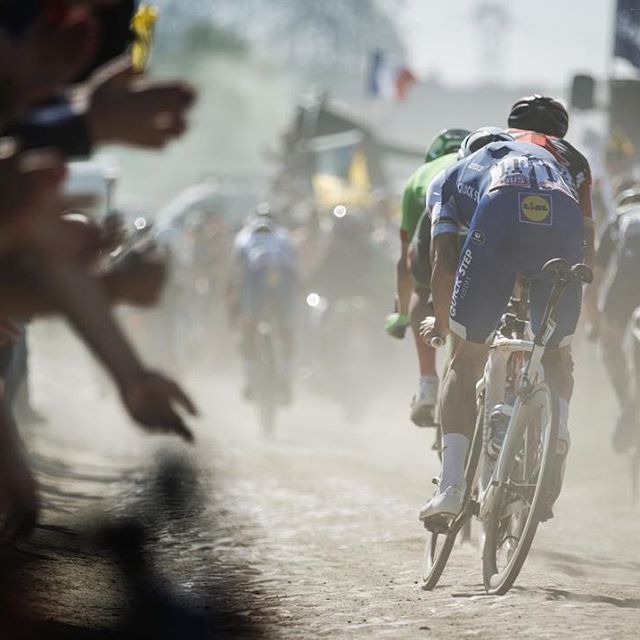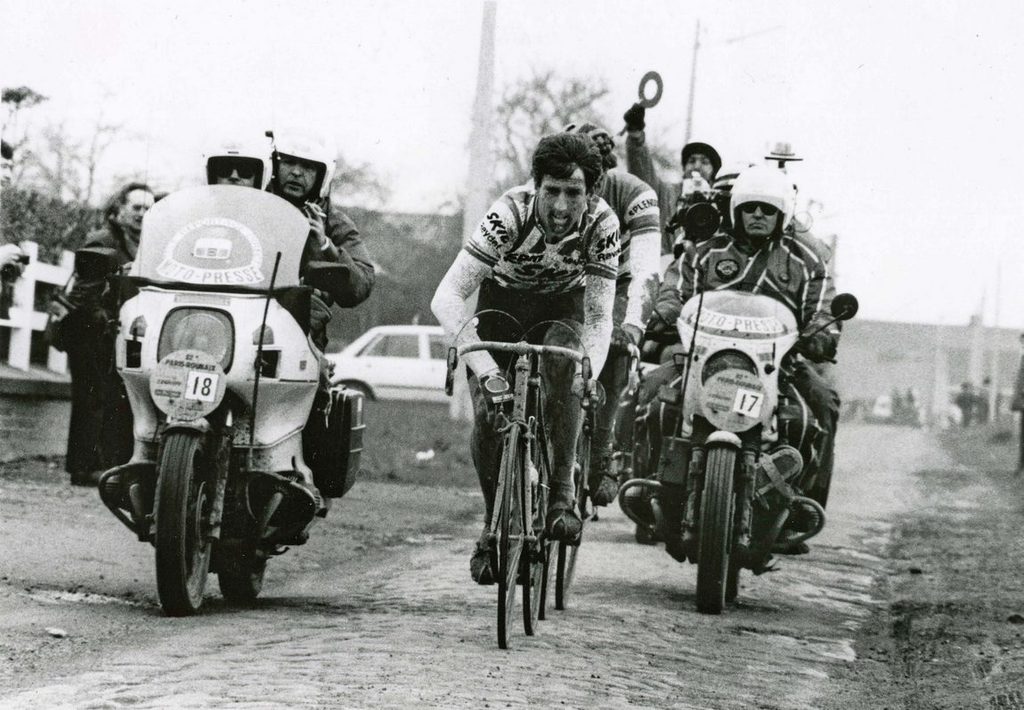Three Points in Space

Most great ideas in life are accompanied by an unforeseen consequence of equal or greater magnitude. For instance, no one predicted that the Industrial Revolution would pollute our air and set off climate change on a global scale. Similarly, no one realized that when placing unfathomable computing power in the palm of our hands in the form of smart phones, it would gridlock traffic as people sit idle at green lights while updating their Facebook statuses. But most of all, no one anticipated that the invention of the Internet would reveal an entire population of people who can judge the quality of a rider’s position simply by looking at a photograph of the bicycle itself. That’s quite a Carnacian talent, one that might have saved the great Eddy Merckx quite a bit of time and hassle.
Legions of people have tried their hand at methodizing bike fitting for the obvious reason that it is theoretically possible and sounds nice and tidy. The problem is that we don’t understand the alchemy of biomechanics, aerodynamics, and physiology that determines the rider’s optimal position. As it stands, bike fitting is more art than it is science where experimentation informed by performance is the only way to get things perfect.
Eddy Merckx was famous for being relentlessly obsessive about his position. A Sunday in Hell and La Course en Tete both show him at work setting up his bikes; measuring the angle of his saddle with a spirit level and basing the height of his saddle and bars from the top tube instead of the more customary measure from the bottom bracket.
In contrast, Sean Kelly was known for giving his frame builders one measurement only: the height from the center of the front axle to the center of his handlebar stem; he felt that so long as he could get his bars at the right height, he could work out all the other dimensions as well. I used this method for years, until I realized that changing the bottom bracket height changes this measurement directly; every centimeter in bottom bracket height dropped increases the effective height of the bars by the same amount.
The fact is, our position is determined by the three points in space by which we are connected to our machine: the bars, the saddle, and the pedals. The frame, stem, cranks, and seatpost are just a means of holding them at the precise coordinates we determine for them. Replicating a position precisely from bike to bike is a challenge that I have yet to meet; I have gotten close, but I have never gotten it perfect.
The critical distances are the saddle height, bar drop, the reach to the handlebars, and the distance the saddle sits behind the bottom bracket (setback). To get my position as close as possible between machines, I standardize all my contact points; I use the same saddle, bars, and crank length on all my bikes which lets me eliminate those variables from the equation. Standardizing on a saddle, for instance, allows me to measure the saddle height from the bottom bracket to the center of the saddle rail which is less error-prone than measuring to the top of the saddle. Then I measure saddle setback using a plumb line and drawing marks on the floor to indicated where the bottom bracket sits and where the tip of the saddle is (the distance between them is the setback.) Then I measure the vertical height of the saddle to the ground and measure the height of the handlebars to the ground; the difference between these two numbers is the bar drop irrespective of bottom bracket height. (If you know the difference in BB height you can also add/subtract that difference from the axle-bar measurement.) Finally, I measure the distance from the tip of the saddle to the center of the bars.
In order to replicate this on another frame, I start with the saddle height, then setback, iterating between the two as you zero in on the correct measurement (sliding the saddle fore and aft will affect its height slightly; raising and lowering the saddle will affect the setback). Then I set the bar height, and then reach, also iterating on these two as the rise of the stem will mean you lose bar drop as you increase or decrease the length of the stem.
It all takes time, and unless you are using identical frames, you’ll never get it completely right. But you can get close. Also, you can consider the approach of caring whether your position is the same on all your bikes or not. I have friends for whom this works and who even enjoy having different positions on different bikes. They claim it lets them appreciate the different personalities of their various bikes. This approach is obviously completely incompatible with my personality type but does, on the surface of it, appear to be quite a lot easier than my approach.


@Geraint
Perfect. Especially the last bit. +1 badge to you my man. The enjoyment is in the journey and the small victories along the way; not in actually answering the question.
Definitiveness is very comforting but it is also very boring.
@Ccos
Its sad because s/he’s so new I just can’t get my dander up enough to bother with kicking up a full blown Nerd-Down. If s/he’d have introduced themself properly as some sort of expert or established some kind of credibility first we might have had some fun.
@Bespoke
This is always true and point to be contended with. Just because I don’t have time / don’t choose to give you shit about something doesn’t mean it went unnoticed. The V works in absolutes; what you put in comes out. You put shit in, you get shat on. Put gold in, you get shat on.
Wait a second. That’s not right.
@Rob
It might be the biggest compliment I’ve ever paid anyone, so it probably has to do with the LNSNJ2011. I was joking to @Gianni about that just the other day. Good times, noodle salad.
@sinikl
I really, truly, hope you meant “tarck” bike and that it wasn’t a typo. Into the Lexi with that, I say. Classic.
@frank
Man, it’s hard to believe Helen Hunt has an Oscar when Emily Watson doesn’t. It’s an injustice of the same magnitude as Oscar Pereiro having a Tour win and Poulidor not.
@frank
The experience of getting it right seems to involve countless hours of getting it wrong first. There is some satisfaction in that, I guess, but I generally think I have other more satisfying things to do with my time.
@therealpeel Countless hours and rides resulting in something hurting either later that day, or the following day. Once the endless fiddling with various things got in the sweet spot, magically all of those after-ride issues started going away (or becoming less severe). I used to be in the ‘get a pro fit’ camp. But, after getting my own fit close enough, I’m no longer in that camp. Sure, take a few queues from various fit tutorials out there and take what you find most valuable and apply it.
The most important measurements for myself:
– Bars to saddle tip
– Saddle setback
– BB to Saddle
I’m hoping to pass along my self-acquired knowledge to a buddy of mine who recently picked up his first ‘real’ road bike and get him in the ballpark of a decent fit. I’ll be sure to sneak in a few teachings of ‘The Rules’ along the way, too…
@frank Noodle salad! As in the set up on that bike is noodle salad.
just trying to get this thread back on track…. And do not believe any of Gianni’s stories. Before the age of 30 he was an inveterate sheep fr.,.,er and did massive amounts of cleaning products Way before that became fashionable. Some where in the archives I have photographic evidence… specifically, the sheep.
@frank oh, i meant tarck alright. all show and no go, wheels that weigh over 2kg but look cool etc. i have zero illusions about ever going to a velodrome with it (in part because the nearest is a whole state away
i have fun with it and it is good training to push a heavy hipster bike around up hills and down.
I’ve always viewed bike fitting as some sort of “dark magic….I know it exist but I really don’t understand how it works. I thought I had my setup fairly well dialed in, no real complaints but I like to tinker which usually results in me taking something quite serviceable and fucking it up. Anyhow, during one of my recent fits if boredom I removed a 5mm spacer form underneath my stem…..holy hell, I couldn’t believe how much better the whole bike felt, seriously, everything just seems to be working in perfect unison now, the stroke is more powerful and the sensation of the ride is at a new level….I may have stumbled on to fitting bliss but the the important thing is that I made it there, regardless of the path I took.
@frank
Boring? No, the point is to ride, not fluff around with endless variations of positioning. The “dissatisfaction – rectification – satisfaction – and repeat cycle” sound like a pain the in arse, not to mention annoying. I want to, and do, climb on my bike and get riding feeling comfortable,’ at one’ even. To ride the whole time with thoughts of “oh this is too high, that is not far enough” would drive me crazy and detract from the experience of the ride. I have a position that is both fast and comfortable and well, I’ll just stick with it thanks. I’ll change something if I happen to start feeling uncomfortable. Enjoy your fluffing about with your saddle cause I’ll be in the bar having a drink.
I’ve been riding road bikes for 26 years and have had five bikes in that time. Fit has been based on plumb line dropped from saddle and playing with saddle height, fore/aft and stem length/ height: not particularly scientific. I might have been lucky, but I’ve been blissfully free of knee or back pain in that time. A couple of friends who are new to the path have gone for bike fits which have lead to significant joint pain that has invariably kept them off the bike.
I’m the sort of bloke who generally embraces change, but the exception to this is my position, for which I reserve the “If it ain’t broke” maxim. Interestingly, one of the staffers in this month’s Procycling has had to admit that the fit he undertook in June’s issue actually left him down on power, so much so that he has gone back to his original position. Most fitters will tell you that they can improve your position, without actually defining what that improvement will be.